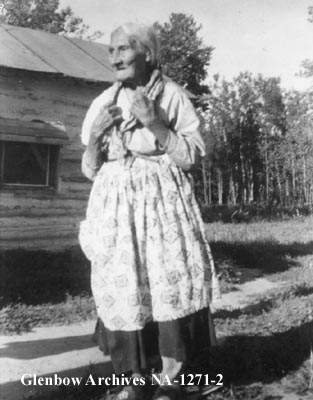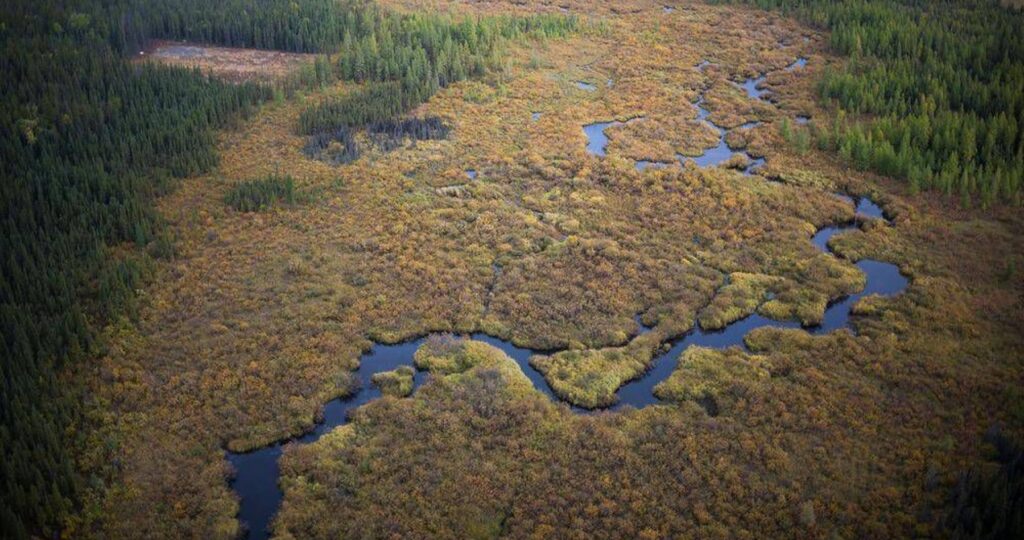Post Category : Archaeotourism Women in Archaeology
Julie Nookum, Indigenous midwife
International Women’s Day is March 8th this year. One aspect of this day is the celebration of the social, economic, cultural and political achievements of women. In honour of this day, we’re going to profile a few women from Alberta’s history.
Today I’ll be profiling Julie Nookum. Unfortunately, very little information about Julie Nookum is available in written records. The information I’ve been able to find about Julie comes from fleeting mentions in the memoirs of Mary Lawrence.i
Mary and her husband, Fred, moved to Fort Vermilion in northern Alberta in 1898, where Fred’s father, Eratus, had established the Irene school to teach Euro-Canadian farming methods to the First Nations in the Peace River areaii (interesting side note: a look at the satellite imagery of the Fort Vermilion and High Level area shows this to be the most northern, larger scale farmland in Alberta today).
While living in Fort Vermilion, Mary gave birth to several children. For her first delivery in 1899, she was assisted by her father-in-law, Eratus Lawrence, and a First Nations midwife. Eratus had studied obstetrics with various doctors in Edmonton before returning to northern Alberta.iii Mary wrote that he served as “a sort of amateur interne during my first child-birth.” It did not go terribly well and Mary reportedly almost died as a result of postpartum hemorrhage.iv “All the remedies father had learned, all the medicine he had brought with him for this emergency were useless.”
For later deliveries, Mary appeared to prefer the help of First Nations midwives. Of the birth of her third child, Mary wrote that she was encouraged by her midwife, Julie Nookum, to give birth “as an Indian woman would have done, kneeling,” and that this had “been the easiest of any childbirth so far. And I was convinced of the logic of this natural method over that to which white women are enforced [i.e. lying flat on their backs to increase ease and comfort of doctors] that I abided by it henceforth.”v
Before he left the north again, Eratus gave the midwife who had assisted him with Mary’s first birth careful instructions on how to proceed with future births.vi It’s not clear if this midwife was Julie Nookum, but it seems unlikely that she would have needed Eratus’ instructions. Aboriginal midwives not only delivered babies in their own communities, but many European women turned to Aboriginal women for help in labour after arriving in Canada and continued to do so into the 20th century.
Julie Nookum is one in a long line of Aboriginal women who have helped bring babies into the world, but one of the few for whom there are written records (see a photograph of another midwife below). Although this written information is scanty, I think it’s important to talk about her because she is symbolic of First Nations women in history. “Countless Native women have been left out of the historical record because of the misogyny and sexism of pre-feminist, male-dominated ideologies.”vii Although there are big holes in the written histories, more information about Julie and other Aboriginal midwives likely lives on in the memories and stories of their families and communities. It’s through talking and working with communities that these holes will be filled and credit given to the significant contributions of Indigenous women to the survival of European communities in Canada.

Glenbow Archives Image No:NA-1271-2Title: Mrs. Adam Callihou, Metis at Hazelmere, Alberta. Date: 1955 Remarks: Copy of PA-24-4. Mrs. Callihou, nee Veronique Gladu, was born at Lac Ste. Anne in 1856. First married to Francis Hambler and after his death to Adam Callihou. They farmed at Flying Shot Lake, southwest of Grande Prairie, Alberta and Mrs. Callihou acted as midwife and nurse for the first settlers in the area.
Despite colonial efforts to intervene in Aboriginal childbirth practices, midwifery continues today. For more information on midwifery in Canada, especially Aboriginal midwives, here are a few links to resources referred to in preparing this blog post:
- http://www.aupress.ca/books/120181/ebook/06_Carter_McCormack_2011-Recollecting.pdf
- http://www.naho.ca/documents/naho/english/midwifery/celebratingBirth/Midwiferypaper_English.pdf
- http://ocanadianhistory.blogspot.ca/2012/05/western-canadian-first-nations-midwives.html
- https://www.historicacanada.ca/content/heritage-minutes/midwife
- http://www.cwhn.ca/en/node/39589
- http://www.naho.ca/documents/fnc/english/Midwifery.pdf
- http://aboriginalmidwives.ca/aboriginal-midwifery-in-canada
i The Fort Vermilion Agricultural Society and Marilee Cranna Toewes, eds., Wilderness Outpost: The Fort Vermilion Memoir of Mary B. Lawrence, 1898 – 1907 (Calgary: Alberta Historical Society, 2008), 159.
iiLangford, Nanci. Childbirth on the Canadian Prairies, 1880-1930. Catherine A. Cavanaugh and Randi R. Warne, eds., Telling Tales: Essays in Western Women’s History. (Vancouver: UBC Press, 2000), 155.
iiiLangford, Nanci. Childbirth on the Canadian Prairies, 1880-1930. Catherine A. Cavanaugh and Randi R. Warne, eds., Telling Tales: Essays in Western Women’s History. (Vancouver: UBC Press, 2000), 155.
ivLangford, Nanci. Childbirth on the Canadian Prairies, 1880-1930. Catherine A. Cavanaugh and Randi R. Warne, eds., Telling Tales: Essays in Western Women’s History. (Vancouver: UBC Press, 2000), 155.
vBurnett, Kristin. Obscured Obstetrics: Indigenous Midwives in Western Canada. Sarah Carter and Patricia McCormack, eds. Recollecting: Lives of Aboriginal Women of the Canadian Northwest and Borderlands. (Edmonton: AU Press, 2011), 168.
viLangford, Nanci. Childbirth on the Canadian Prairies, 1880-1930. Catherine A. Cavanaugh and Randi R. Warne, eds., Telling Tales: Essays in Western Women’s History. (Vancouver: UBC Press, 2000), 155.
viiCarlson, Nathan D. Searching for Gathertine Auger: The Forgotten Wife of the Wihkitkow (Windigo). Sarah Carter and Patricia McCormack, eds. Recollecting: Lives of Aboriginal Women of the Canadian Northwest and Borderlands. (Edmonton: AU Press, 2011), 228.



